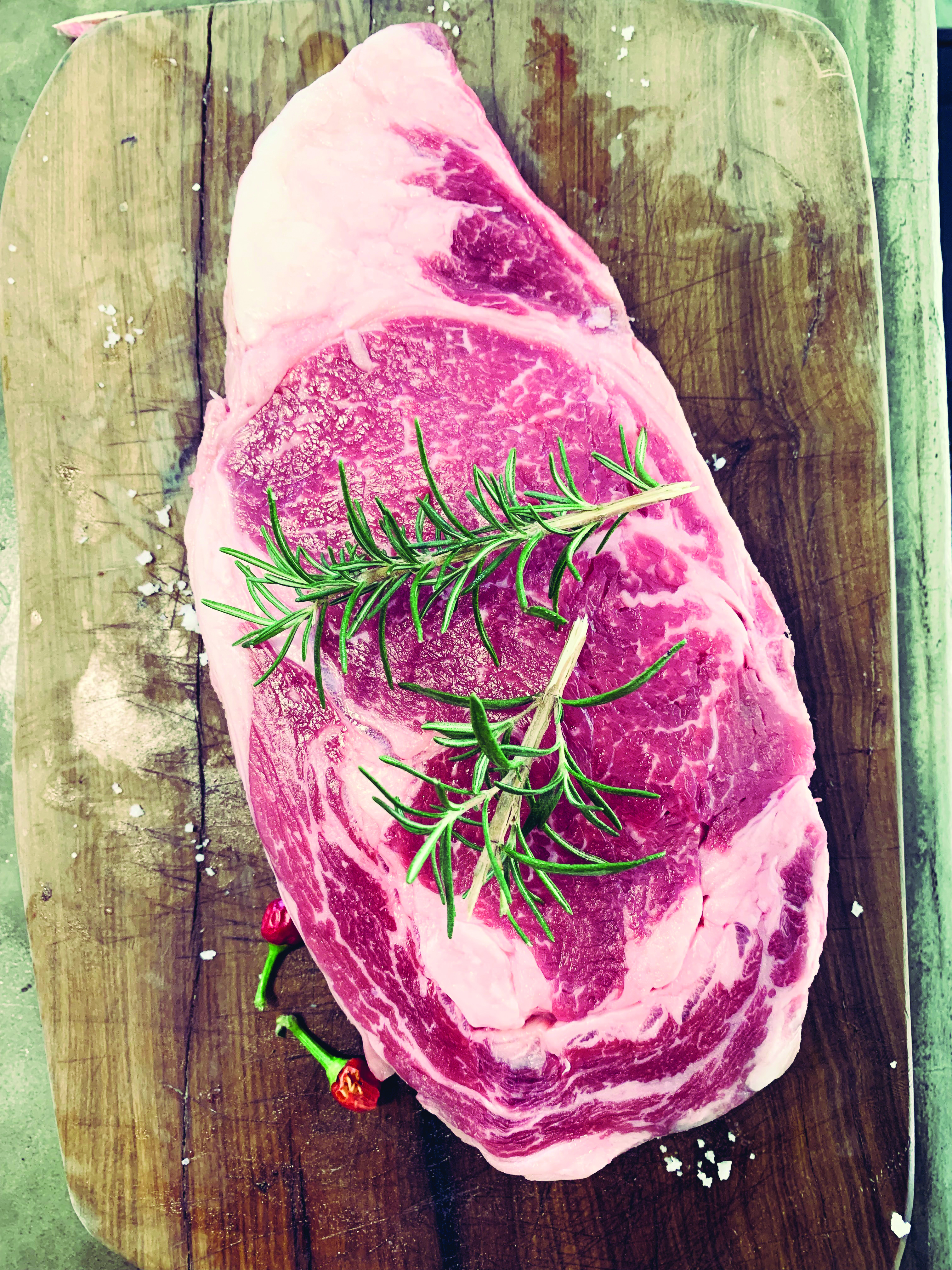5.3 The meat derby between Cinta and Chianina
Ecstatic eyes, immersed in art and history, in front of the fresco of Good Government by Ambrogio Lorenzetti in the Sala dei Nove of the Palazzo Pubblico in Siena. The Effects of Good Government in the Countryside (1338-1339) narrates the agricultural activities of medieval Siena; there is also a farmer who enters the city on foot carrying a pig. It is not just any pig, it is a specimen of Cinta Senese, a real symbol of the Sienese tradition for the meat and for the excellent products that reach the tables from the farms; a valuable black pig wrapped in white, rediscovered not many years ago thanks to the work of some Sienese breeders. But that pig is in good company. A few kilometres away, in the Sienese Valdichiana, one finds the Chianina, a very ancient breed of cattle, dating back to the time of the Etruscans, which is synonymous of quality, healthiness and territory, appreciated all over the world. In the middle of a large production of high quality traditional meats, of typical cold cuts, which filling the Sienese tables with taste and flavour.
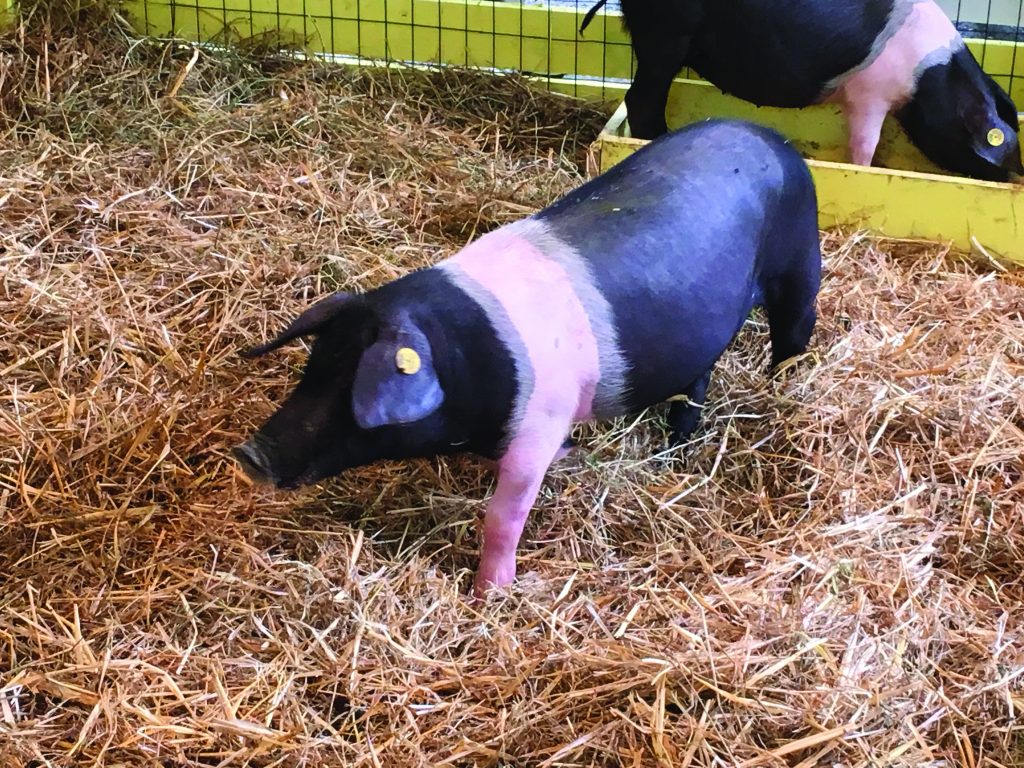
Our journey of taste in the land of Siena begins with the Cinta Senese DOP (Protected Designation of Origin). What only some decades ago was a breed that was practically extinct, has instead been rescued and relaunched thanks to the investments of public bodies and Sienese breeders, by purchasing and maintaining breeding boars, in order to achieve a sufficient number of animals to withdraw the Cinta Senese from the list of endangered species. It has spread because of its robustness, rusticity and easy adaptability to breeding in the wild and semi-wild state in the woods or in the meadows used as pasture from which it takes part of its sustenance by feeding on the fruits of the forest, grass and cereals. This animal lives well in this area thanks to the type of pastures and woods present. It is thanks to these territorial peculiarities that it has its unique characteristics, linked to the type of diet and the resulting particular taste of meat: for these reasons it has become an object of PDO protection. In fact, at European level, in March 2012, the Cinta Senese denomination reserved exclusively for pig meat from animals born, bred and slaughtered in Tuscany according to tradition obtained the “Denominazione di Origine Protetta” (Protected Designation of Origin) mark for animals originating from the mating of animals registered in the Cinta Senese Registry and Genealogical Book.
There are certain curiosities to learn about this precious animal that affect the quality of the meat: the animals must have the right space to move, so they cannot be more than 1500 kilos of live meat per hectare (therefore about 10 animals), while in organic farming ten animals can live in 2500 square metres. The Cinta Senese animals live in a space four times larger than in organic farming. They can be fed with produce derived 60% from Tuscany, without soya, without derivatives from chemical extraction because naturally, in the past they did not exist. The animals cannot be slaughtered before they reach the age of one year.
With the Cinta Senese meat, delicious cured meats are produced: from Cinta ham to salami and sausages, but also the precious bacon and capocollo; real delights for the palate. Cinta Senese ham, to mention just one of the most appreciated cured meats by gourmets, is produced in Siena and throughout the province. It has a bright red colour tending to dark red meat and a very low percentage of subcutaneous fat tending to white, with thin pink veins. Its taste, very intense, is somewhat stronger than that of a “normal” Tuscan ham.
Normal, in terms that, as for other Tuscan cured meats, it can be produced with other varieties of pork, the most used is Large White, which, unlike Cinta Senese, is not bred in the wild. It has a high growth rate at all ages, an outstanding food processing capacity, high slaughtering yields, excellent meat quality with the right fat to lean part ratio, well shaped hams. The meat is used for both typical cold cuts and ready to eat meat production. The slaughter weight used for heavy pigs is about 160-170 kg (in one year). The flavour, when compared to the Cinta Senese, is a little more delicate and less intense, but often it can also depend on processing techniques and processes.
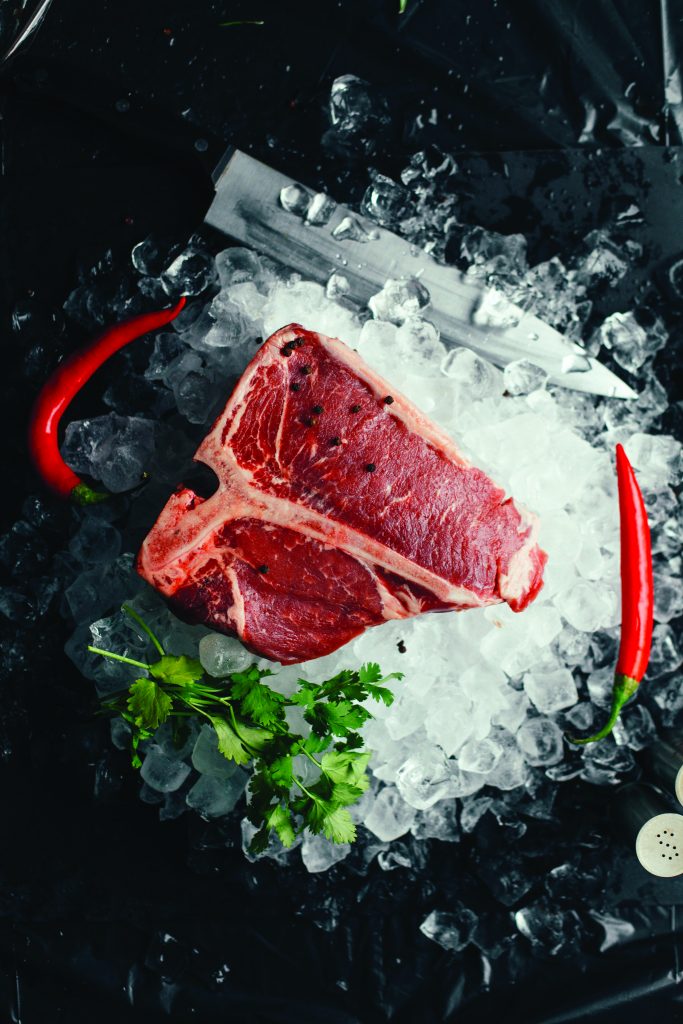
As we continue our journey in the tradition of Sienese cured meats, we must mention the salami: a seasoned sausage made of pork and spices, with a compact consistency and a dark red colour. The pieces, weighing between 500 grams and 2 kg, have a very intense aroma and flavour. The main components of Sienese (and Tuscan) salami are the lean parts of the pig (ham, shoulder and neck) finely chopped and mixed with the fat obtained from the dorsal region cut into cubes. The mixture is combined with flavourings (salt, ground pepper, red wine, garlic and sugar) and then stuffed into a pork or beef casing. The seasoning can last from 20 days to 12 months depending on the size of the piece. After the fourth month the larger salamis are externally treated with semi-finished fat which allows a longer maturing and an intensification of the flavour. And we get to know the sausage, another typical salami that has a compact shape of a pinkish colour with reddish shades. Meats from different parts of the pig are used for the preparation, such as shoulder and ham. The meat, selected and mechanically minced, is mixed with natural flavourings such as garlic, salt and pepper and then stuffed into sausages. The stuffing follows the phase of manual binding with string, during which the natural casing is pierced or “pinched” to avoid the formation of air bubbles. The Tuscan sausage can be eaten fresh or seasoned (approximately one month). A variable in the Sienese area, is the wild pig sausage, which can be recognised by the darker colour of the meat and the particularly intense flavour, obtained by mixing, processing and stuffing wild boar and pork meat, with the addition of spices such as pepper and chilli pepper. 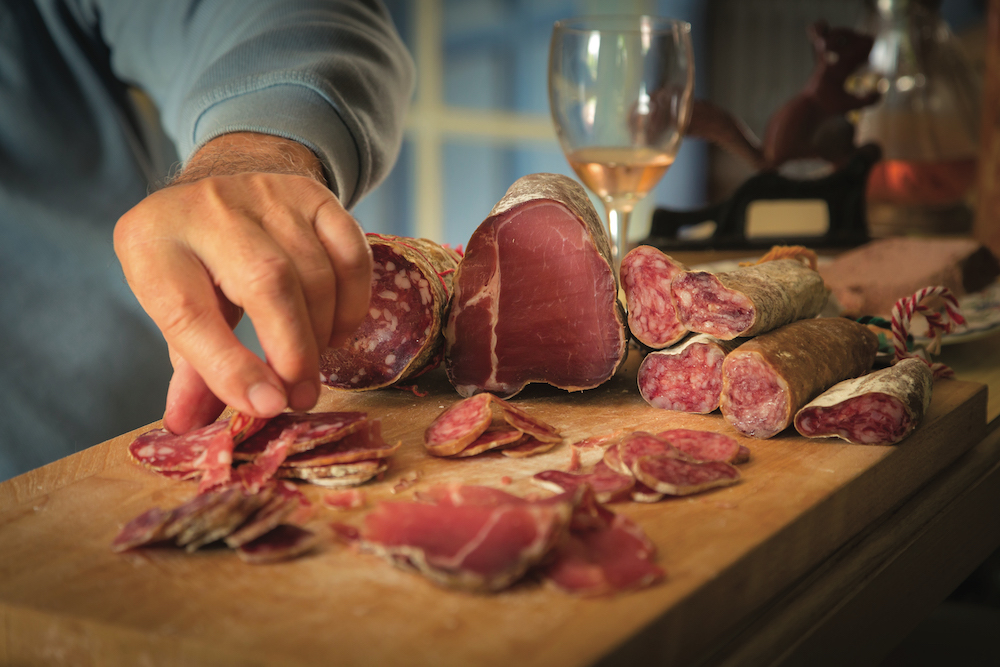
The Sienese capocollo, which is produced throughout the province of Siena, has an extended cylindrical shape with an aroma and flavour that recall the spices used for its production. The capocollo is salted by hand while adding pepper and natural flavours and spices. After a second salting, the product is stuffed and tied in a net and in the typical straw paper. Its curing can last from thirty to sixty days. The name “finocchiata” recalls the ingenuity of the Tuscan farmers who, in order to save the precious pepper, protected the capocollo by sprinkling it with fennel seeds. The spices used vary according to the producer, and each butcher has his own secret. Among these can be used cloves, cinnamon, coriander and nutmeg. But if you are in one of the many butcher’s shops of the area, or in the taverns, the advice is to try also the buristo and the soppressata, two very particular and tasty cold cuts, and to make you cook the fegatelli, an ancient dish of the local cuisine.
The Prosciutto Toscano, protected by the Community PDO trademark, deserves a separate chapter. A millenarian tradition in Tuscany: around the 15th century, at the time of the Medici family, the production of Tuscan Ham was regulated with provisions concerning the entire production process. The delicate flavour, the crimson red of the slices, dry and lean, the intense taste enhanced with a slight savour ness are the distinctive features of one of the excellence of Tuscan gastronomy. The flavour and aroma make it incomparable, but the secret of the success of the Tuscan Ham is first and foremost the perfect climate for curing, characterised by the breezes, temperate winds of land and sea that blow over an area protected from the north wind by the Apennine chain. A delicate taste but skilfully enriched by those unmistakable aromas of “Tuscanity”, which are typical of its vegetation, rich in mastic trees, myrtles, junipers, secret ingredients of the producers’ recipes.
The processing of the fresh thighs is followed by a careful selection aimed at choosing only those thighs that meet the requirements of the production regulations and the characteristics that ensure the achievement of a high quality product. Prior to salting, the ham is trimmed to obtain its characteristic round shape with a frame that must not extend beyond the head of the femur by more than 8 cm. Among the different phases is also important the curing, which is done in special rooms with optimal conditions of temperature and humidity, where the hams mature slowly, thus developing all those particular aromas and flavours that distinguish Tuscan PDO ham.
Lastly, a curiosity. The typical tasting of Prosciutto Toscano Dop begins with the cut: The best and traditional way to taste the scent and aroma of the ham is to slice it manually, in fact the cold blade of the knife allows to leave all the flavours intact.

And then the already mentioned Her Majesty the Chianina. The Sienese Valdichiana, the centre of Bettolle (Sinalunga), was the birthplace of Ezio Marchi, a veterinarian, who is unanimously considered the father of the modern Chianina in 1869 while the Chianina cows seem to have been bred in the valley between Arezzo and Orvieto for 2500 years. The flavour of the meat that we appreciate at the table today, in fact, is thanks to his scientific studies of breed selection.
Among the protected breeds of the White Calf of the Central Apennines PGI (Protected Geographical Indication), the Chianina is the one that has the most noble and affirmed image, thanks to the fame that has been conquered with the gastronomic myth of the “Florentine” steak. Derived, some believe, from the Bos Primigenius (the one depicted in the graffiti of the prehistoric caves) of which traces are still preserved in the ancient “rump”, the Chianina beefsteak was already much appreciated by the Etruscans and Romans who used it in triumphal processions, choosing it among other cattle for its characteristic white porcelain mantle.
Other somatic features which make the bovine easily recognisable are the pigmentation of the muzzle and tongue, the light and elegant head with short horns, the long and cylindrical torso with wide back and loins and longer limbs than other breeds. After over 22 centuries, the Chianina cattle continue to be bred in the middle Tiber valley and in the Val di Chiana Senese and Arezzo. The PGI protection obtained with the wording “Vitellone bianco dell’appennino centrale” (White calf from the central Apennines) ensures the quality of the production, the traceability of the meat from birth to slaughter, following each bovine up to the distribution phase as a guarantee for the consumer.
The Chianino beef PGI can be recognised by its bright red colour, fine texture, consistent, firm and elastic to the touch. Its characteristic features are the small infiltrations of fat (white or slightly whitish) that penetrate the muscle mass and the external thickness of the fat covering the surface of the back and loins. As far as the fat content is concerned, Chianina meat has average values of 2%, a lower percentage than other breeds, from which it distinguishes itself also for its high iron content.
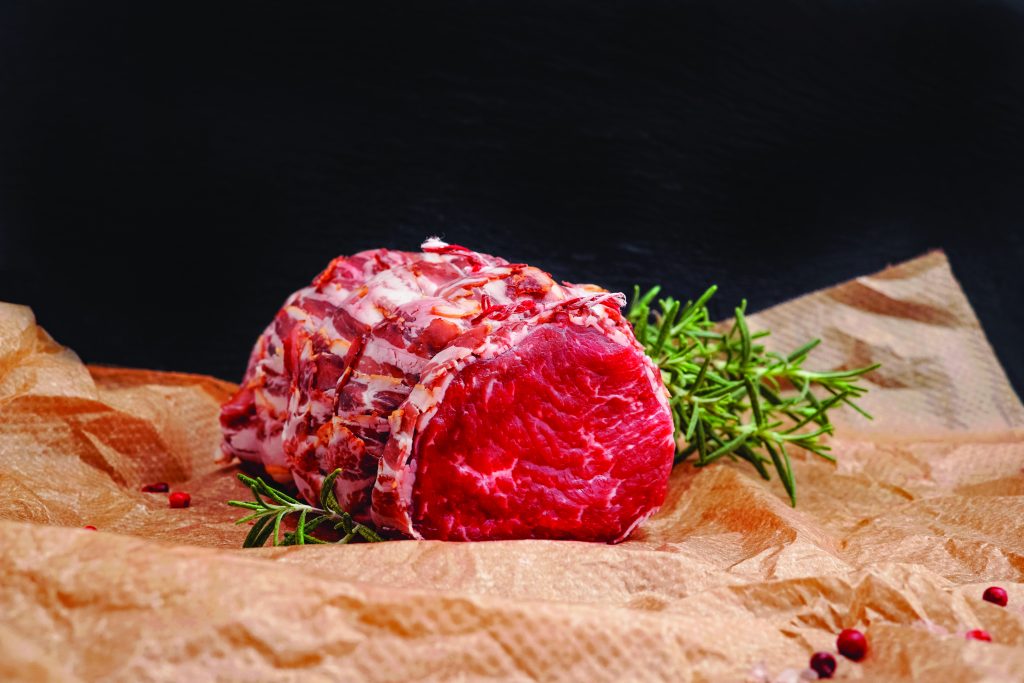
From the calf offal (from Chianina and other breeds) we produce tripe, which ends up on the plate to offer diners a unique, extremely tasty and traditional taste, just like Sienese tripe. The most tender and sought after is that of the Chianina calf. It consists of the different parts of the bovine stomach: rumen, reticulum and omasum. In Siena, the abomasum is not prepared, that is the last stomach, which is instead typical of Florentine cuisine, with the name of lampredotto. The tripe must be boiled and then made into strips. It is cooked with a sautéed mixture of olive oil, garlic, onion, celery and carrot and then browned. During the cooking a glass of white wine is poured and when it has evaporated it is finished with a few spoonfuls of tomato sauce, without adding too much. After the sauce has withdrawn, the tripe is ready for the last minutes of cooking. It is served with the addition of plenty of grated Parmesan cheese or dry pecorino. Fresh sausage can also be added during cooking and, finally, fresh and chopped tarragon.
Certainly the most famous meat dish that can be tasted in many restaurants in Tuscany is the Florentine steak. It is prepared by cutting the sirloin (the part corresponding to the lumbar vertebrae, half of the back from the tail) of calf or scallion: it has in the middle the ‘T’ shaped bone, with the fillet on one side and the sirloin on the other. The meat must first be matured for a few weeks in cold rooms, and when cooked it must be at room temperature. The cut generally weighs over 1 kg and is 5-6 centimetres high, about 3-4 fingers.
And then the cut is very appreciated, an alternative to the ‘fiorentina’ which allows you to taste the best meats of the territory. It is obtained from the rib of beef and is cut into thick, oblique slices once cooked. As for the steak, it is very important to cook it over high heat so that an external crust can form and, as a result, the inside of the steak is bloody. The only thing left to do is to conclude this journey of taste among the meats of the province of Siena, with the combination. And in this case the solution is easy and obvious: if the choice is one of the many great Sienese red wines, it will certainly be the right choice.
Brochure edited by Primamedia, Siena
Texts edited by Lorenzo Benocci
Editorial coordination: Elisa Boniello and Laura Modafferi
Photos: Archivio Comune di Siena Graphic design: Michela Bracciali
